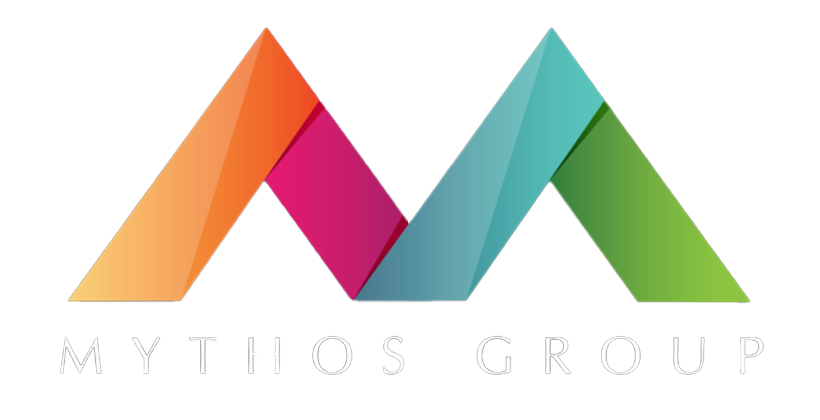Here’s what stopped me cold when I saw our latest research: 80% of companies are deploying generative tech, but exactly the same percentage reports zero bottom line impact. I’ve spent the last three years helping CEOs navigate this transformation, and I can tell you the difference between companies seeing real value and those burning cash comes down to how they set up from day one. The foundation you build in your first 90 days determines whether you’ll transform your business or just add expensive toys to your tech stack.
Where We Actually Stand
Let me give you the real picture of what’s happening out there. McKinsey’s latest research shows that 78% of organizations now use these tools in at least one function, with adoption surging as companies reshape workflows and governance structures. The Fortune 500 isn’t holding back, with 70% already using Microsoft 365 Copilot.
But here’s what the adoption numbers don’t tell you. The market’s exploding. We’re talking about massive numbers that would make your head spin. That’s not gradual growth, that’s a gold rush mentality driving decisions. And honestly? It shows.
What I’m seeing in boardrooms is excitement mixed with frustration. Everyone knows they need to move, but most are moving without strategy. The gap between investment and impact is where the real work begins.
The Foundation Framework That Actually Works
The companies I work with who succeed don’t start with technology. They start with three foundational elements that separate transformation from experimentation.
First, they align their roadmap with both quick wins and transformative use cases simultaneously. You need early victories to build momentum and credibility. But you also need to invest in the high impact applications that will drive sustainable competitive advantage. Think of it as building trust and capability in parallel, with one funding the other.
Second, they make their data purposefully ready, not perfectly clean. This is where most initiatives crash before they start. Gartner research shows that poor data quality drives 30% of projects to abandonment after proof of concept. That’s a staggering number, but it makes sense when you think about it.
Third, they embed these capabilities into business strategy from day one, not IT strategy. Most leaders think about this backwards, treating it as a technology initiative when it’s actually organizational transformation enabled by technology.
Building Strategic Implementation
Here’s what I’ve learned from working with dozens of client transformations. Successful adoption requires strategic leadership, not technical deep dives. Your job as a leader isn’t to understand the algorithms, but to understand when and why to deploy them, how to anchor initiatives in business context, and how to lead transformation responsibly.
The companies getting this right ask fundamentally different questions. Instead of “Where can we plug this technology into current operations?” they ask “How does this change what’s possible for our business?” That shift in thinking separates tactical deployment from strategic transformation.
You need to redesign workflows around new capabilities rather than bolting tools onto existing processes. This means rethinking job roles, decision rights, and performance metrics. It means designing human machine collaboration, not replacement.
Case Study: Lumen Technologies’ Strategic Approach Lumen uses Microsoft Copilot to summarize past sales interactions, generate recent news, identify business challenges, track broader industry trends, and provide insights and recommendations for next steps. This process traditionally took up to four hours per seller. In 2024, Lumen reduced that time to just 15 minutes, projecting annual time savings worth $50 million. The key was redesigning the entire sales workflow around AI capabilities, not just adding AI to existing processes.
The Data Reality
Let me share what actually works for data preparation based on three years of client experience. Traditional thinking says you need perfect data before you start. That’s backwards and expensive.
Gartner’s research shows that readiness depends entirely on your specific use case context. Perfect data is the enemy of purposeful data. Start with your highest impact use cases and work backwards to data requirements.
What metadata do you need for this specific application? What governance structure supports this use case? What accuracy standards actually matter for this business outcome? This approach lets you build readiness incrementally while delivering value, rather than trying to perfect everything before you start.
Case Study: Chi Mei Medical Center’s Data-First Approach Taiwan’s Chi Mei Medical Center developed AI copilots built with Microsoft Azure OpenAI Service to help overworked healthcare staff. By focusing on purposeful data rather than perfect data, they achieved remarkable results: doctors now spend 15 minutes instead of an hour writing medical reports, nurses can document patient information in under 5 minutes per patient instead of 10 to 20 minutes, and pharmacists doubled their patient capacity from 15 to 30 per day.
The Search Revolution Nobody’s Discussing
MIT Technology Review highlights something most companies are missing. Generative search is transforming how customers interact with information. Google’s overviews, Microsoft’s Bing responses, and OpenAI’s search features aren’t improving search. They’re replacing it with conversation.
Your customers are developing new expectations about information access. They want to converse with data, not hunt through results. This shift from finding information to conversing with information changes user behavior and business models fundamentally.
The strategic opportunity here is enormous, but most companies are still optimizing for yesterday’s user behavior. Think about how this impacts your industry specifically. How does conversational information access change customer journeys?
Case Study: Walmart’s Search Transformation Walmart built an all-new generative AI-powered search function across iOS, Android and its website using Azure OpenAI Service. The company recognized that search was becoming conversation and redesigned the entire customer experience around this insight, generating significant improvements in customer engagement and satisfaction.
Avoiding Predictable Failures
Let me tell you where I see transformations typically derail. Most failures happen because companies treat this like software deployment rather than business transformation. They focus on features and functions instead of outcomes and value.
There’s another risk most companies aren’t considering. Autonomous systems that execute tasks with minimal human oversight amplify risks around errors, governance, accountability, and unintended disruption. The solution isn’t avoiding these capabilities. It’s designing proper human machine collaboration from the beginning.
Harvard Business Review research warns that organizations are unprepared for these autonomous agents. I’m seeing this firsthand with companies struggling with basic chatbots while considering systems that make decisions independently. Build governance structures that scale with your capabilities, not after them.
Case Study: EY’s Governance-First Implementation EY’s approach to scaling Copilot across 150,000 employees demonstrates proper governance. They started with clear use cases, built robust oversight mechanisms, and achieved productivity gains of up to 14 hours per week using AI digital assistants. The key was establishing governance structures before scaling, not after.
Your Practical Transformation Roadmap
Based on my client work, here’s the approach that actually delivers results. Start with strategic alignment by ensuring your executive team understands this technology’s role in business strategy, not just its technical capabilities. Connect initiatives to business outcomes, competitive advantage, and organizational vision.
Next, identify your quick wins and transformative use cases simultaneously. Quick wins build credibility and momentum while transformative use cases drive sustainable value and competitive advantage. You need both, and you need to pursue them in parallel.
Focus on data readiness for specific use cases rather than perfect data across all systems. Build governance structures that support automated decision making. Design human machine collaboration rather than replacement, and create feedback loops that improve both human and machine performance continuously.
Finally, embed these capabilities into core business processes rather than treating them as separate initiatives. The goal isn’t adoption. It’s business transformation enabled by these tools. Success means reshaping how work gets done, not just adding new software.
Case Study: Finastra’s Marketing Transformation Financial software company Finastra used Microsoft 365 Copilot to transform its marketing processes completely. Since integrating Copilot, the team reduced time-to-market for campaigns from three months to less than one. Employees cite 20% to 50% time savings across tasks like analysis, supply management, and budget management. The transformation succeeded because they redesigned entire workflows, not just individual tasks.
Making It Strategic
The companies I work with who succeed understand that this isn’t about technology deployment. It’s about organizational transformation. They’re not asking whether to adopt these capabilities. They’re designing competitive advantage around them.
They focus on making data truly ready for specific outcomes, not perfect for imaginary standards. They elevate automated tools from department experiments to strategic collaborators. They embed these capabilities into business strategy at the highest levels.
These organizations recognize that transformation requires fundamental changes in how work gets done. They’re not trying to improve existing processes. They’re reimagining what’s possible when humans and machines collaborate effectively. The difference shows up in their results within quarters, not years.
Case Study: Newman’s Own’s Lean Operation Purpose-driven food company Newman’s Own, with only 50 employees, competes with multinational brands by leveraging Microsoft 365 Copilot strategically. Key results include the marketing team tripling the number of campaigns they run each month. By treating AI as strategic infrastructure rather than departmental tools, they achieve enterprise-level impact with a fraction of the resources.
The Window Closes Fast
The landscape in 2025 offers unprecedented opportunity for companies willing to approach transformation strategically. Tools are everywhere, markets are exploding, and foundational capabilities are emerging across every industry. But success requires more than technology deployment.
It requires designing strategy, infrastructure, and leadership aligned to measurable business outcomes. The companies moving strategically now will build sustainable advantages while their competitors are still running pilots. The window for competitive advantage is open, but it won’t stay open indefinitely.
The companies that treat this as business transformation rather than technology adoption are already seeing results. The question isn’t whether you’ll adopt these capabilities. It’s whether you’ll join the 20% that figures out how to make them actually work.







